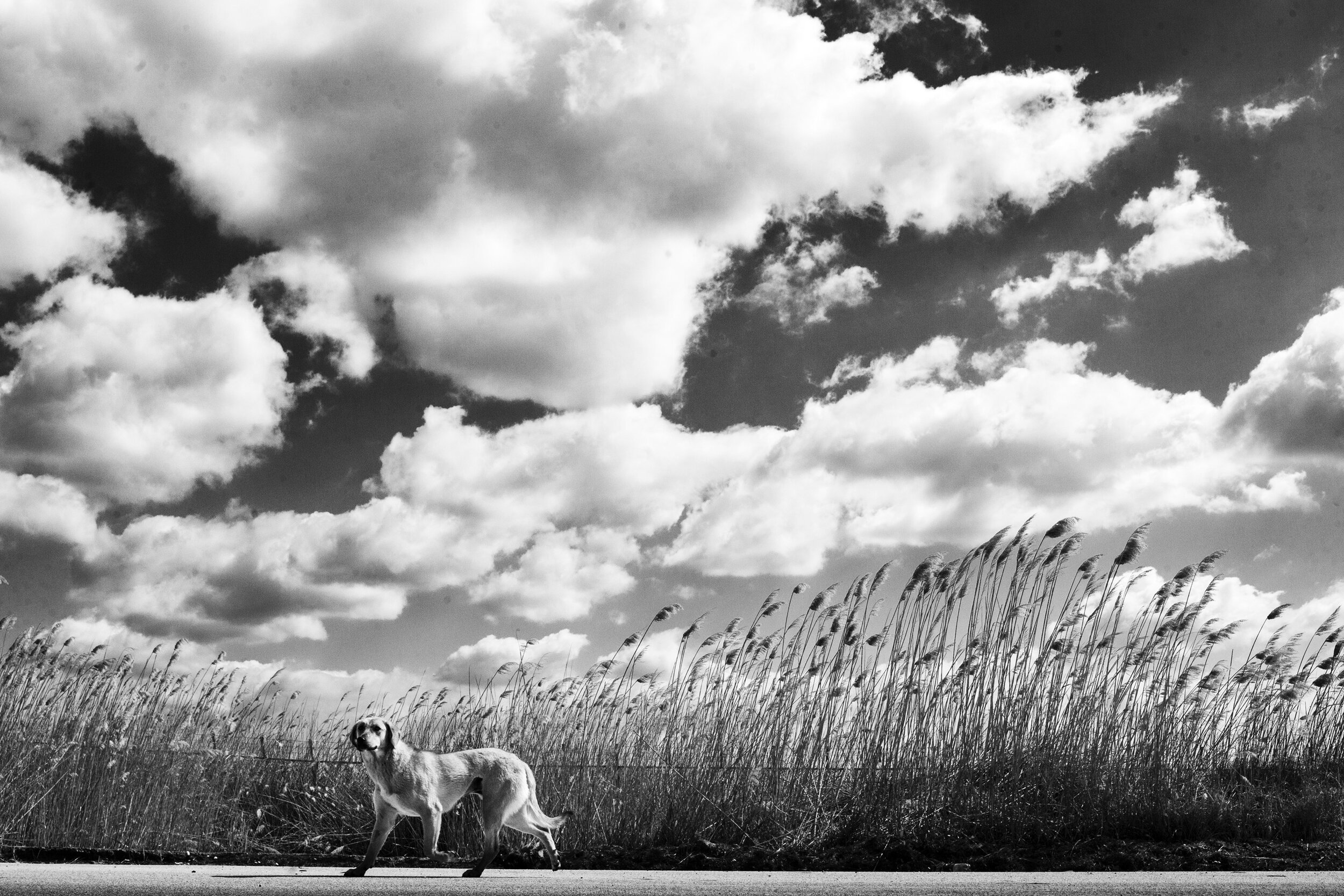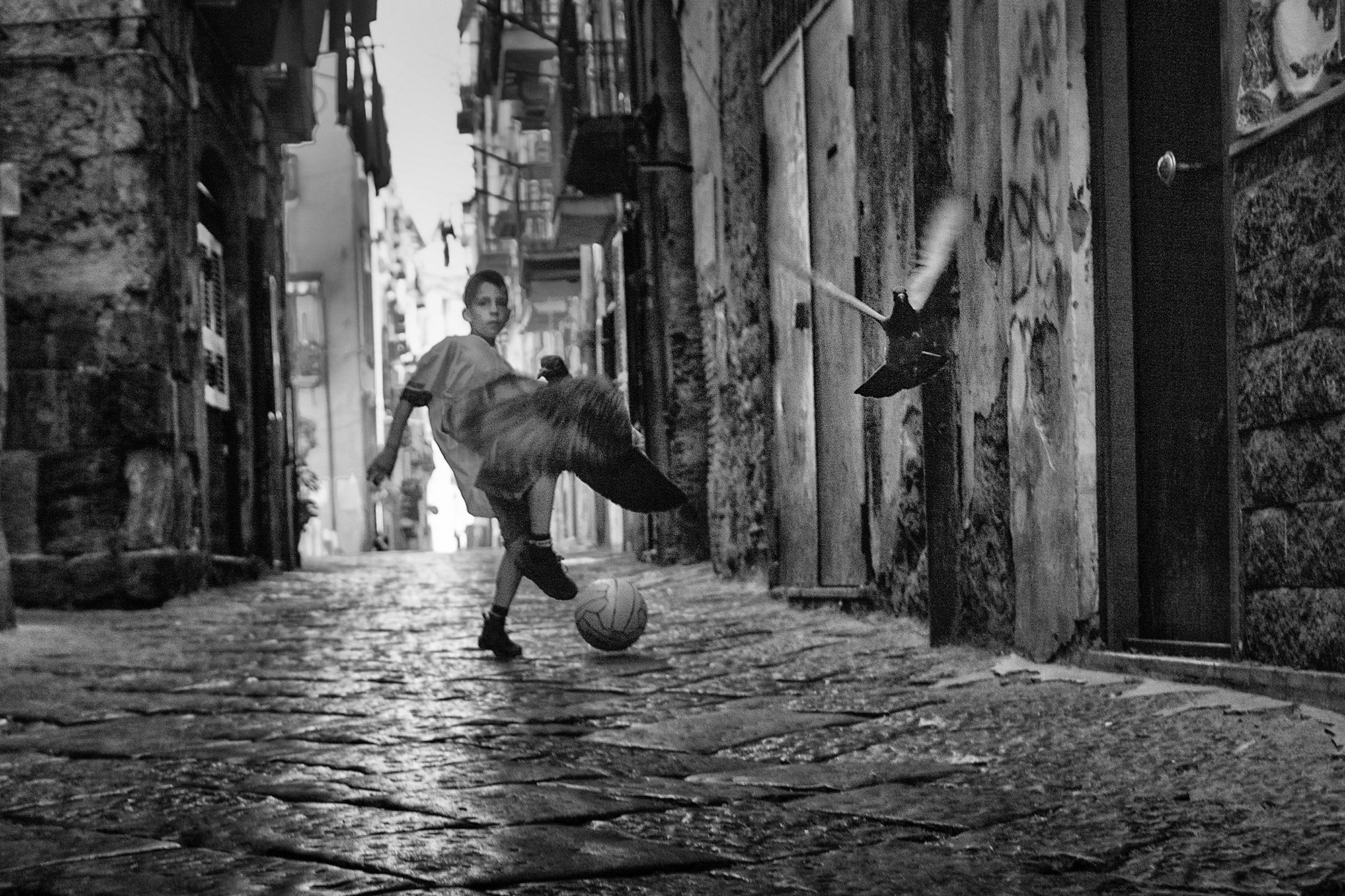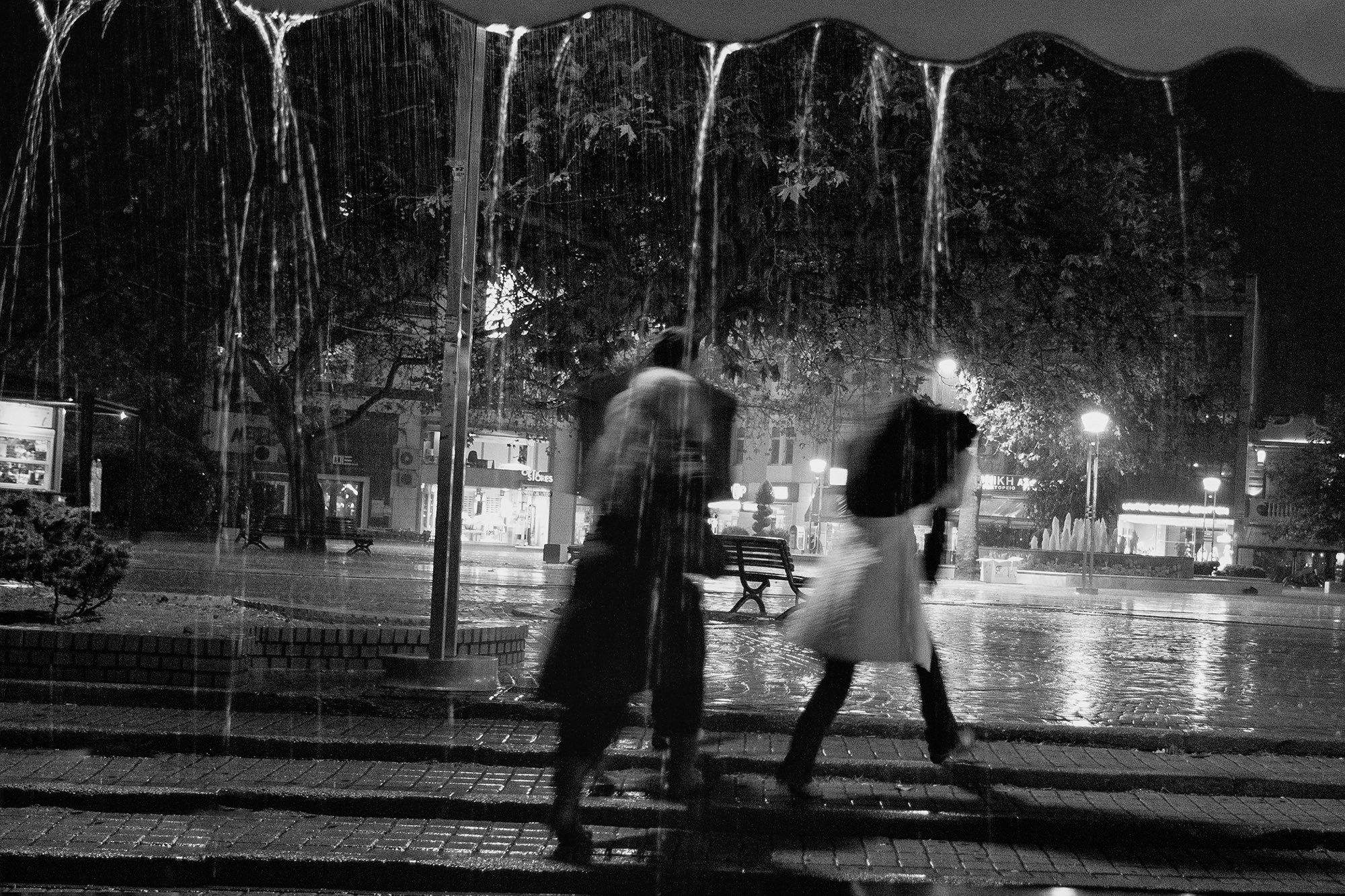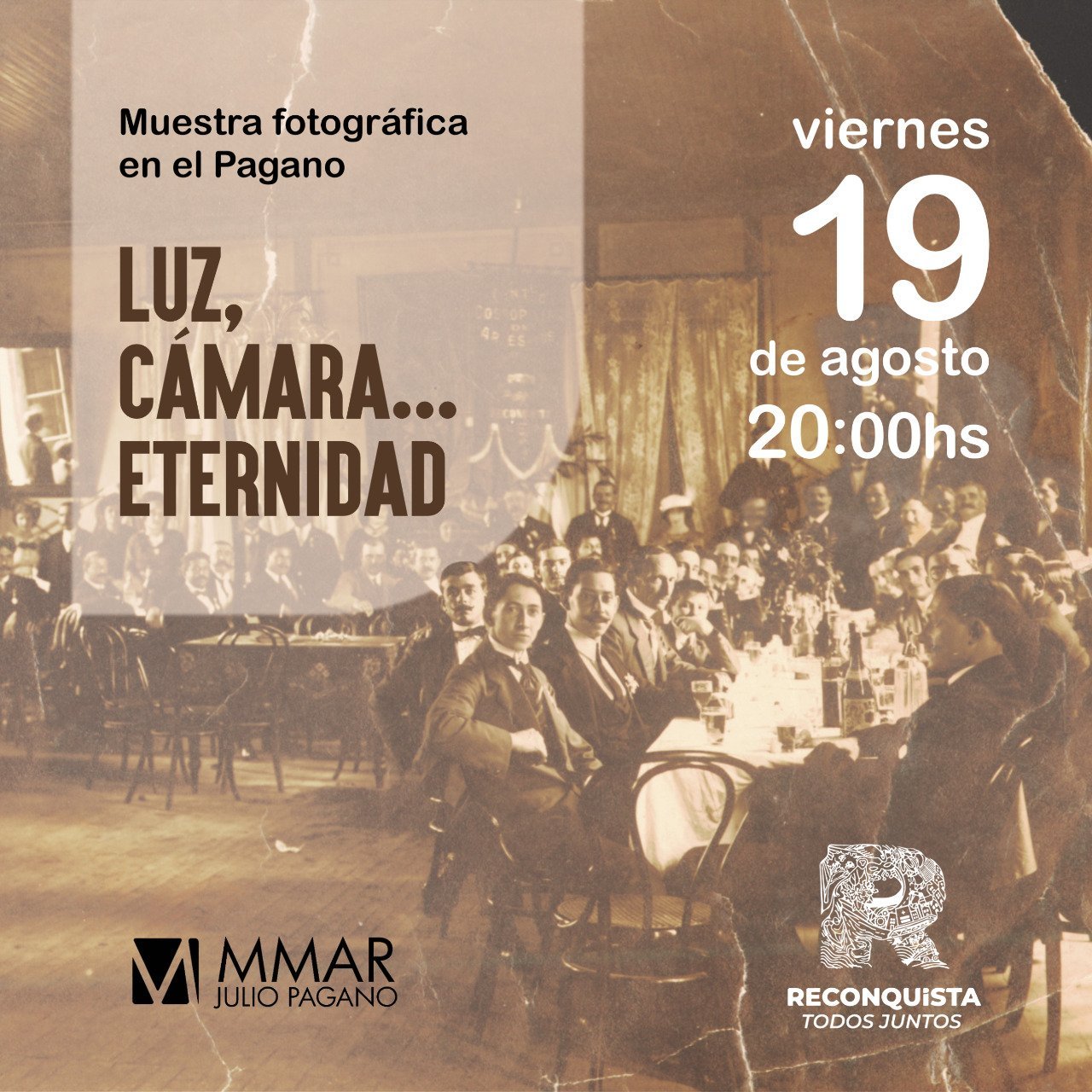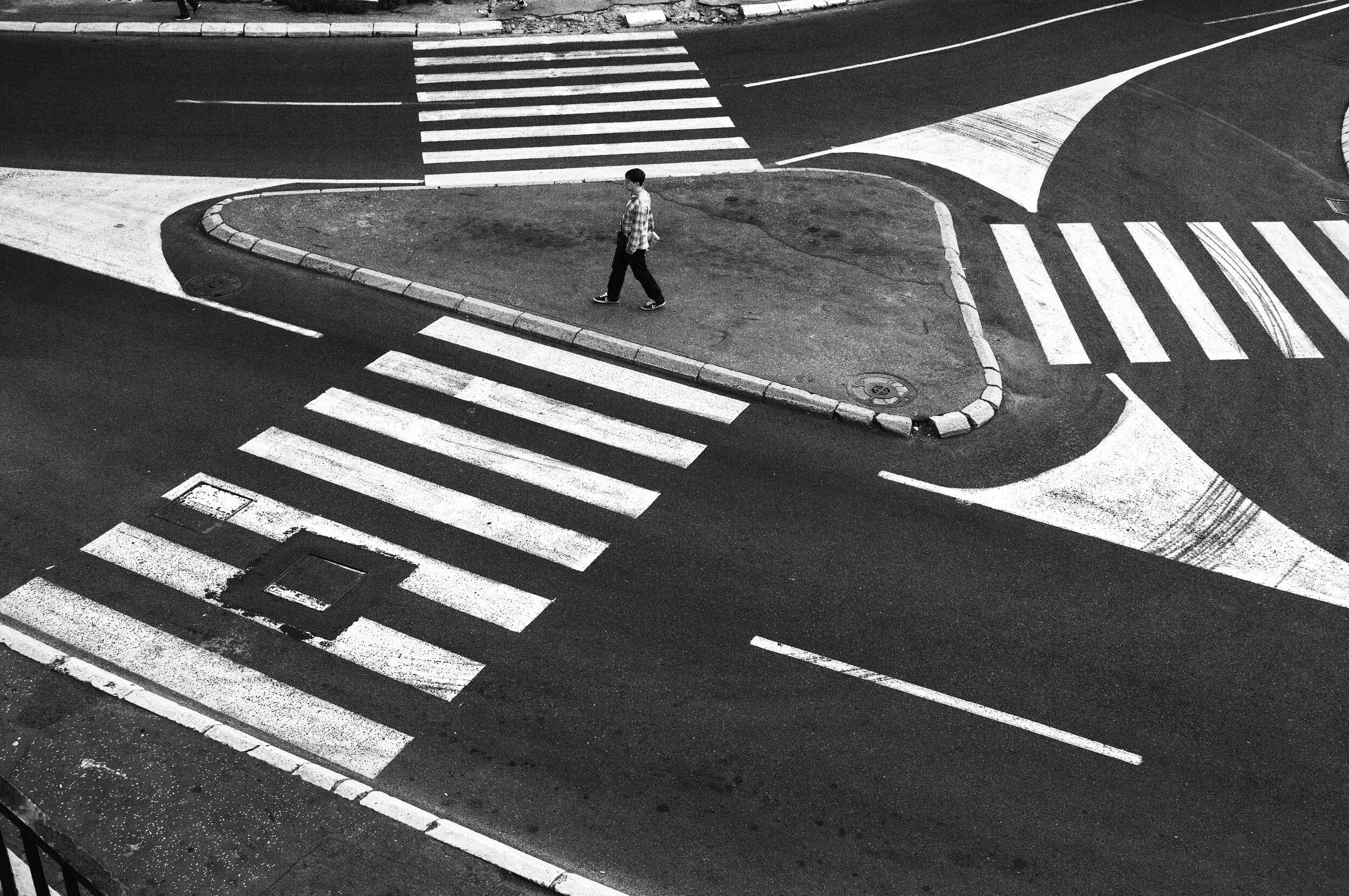Petros Kotzabasis
A photographer who teaches fine-art photography
In my photos I see the world as volumes, shapes and lines.
I was born and bred in Komotini, a small town in northern Greece, where I have chosen to live. I have been involved with photography since 1985 with just a 10-year-interval.
My field of reference is ‘the street’. I neither seek extraordinary events, nor do I travel around in quest of a subject to photograph. I have been photographing the “riches” of normal life on a daily basis. I seek nothing but the moment when narration becomes superfluous, with a view to creating a new universe where everything will be evident yet something is left unrevealed, not with symbols but with hints. My starting point is a quote by Odysseas Elytis, an eminent Greek poet, that goes as follows: “with lime twigs you may capture birds, yet you never capture their singing. It takes a different kind of twig….”
The ‘project’ I am working on is a single one and it will only be over once my life cycle is over, hoping that every photo gets across to the viewer the intensity I felt when I raised my camera, opening for them small cracks in the solid wall of reality, allowing them to see beyond and through reality and its laws. I admit that I make use of reality itself but only as a start point for my photos, trying to shape something that pre-existed within me and at the same time giving back to life itself what I have borrowed for a single moment but now in an altered form as dictated by my own spirit. Thus the path l follow is the exact opposite of those involved with applied or commemorative photography, who use photography as a means to show reality.
The purpose of this exhibition is to show the work of the whole Progressive Street Gang – a diverse collection of photographers from around the world – which is not exclusively a group of street photographers but a group of photographers across the board. Talking about styles and differences in techniques and approaches is boring and not even very useful, because what counts in photography is sincerity. For this reason, I have chosen to couple images, a kind of shot – reverse-shot, freely interpreted. As in life, there is a glance and a counter-glance that gives depth to everything and every event, so this conceptual escamotage helped me to select photos that when put together managed to create a story and provoke thought, whilst showing at the same time the peculiarities of the various photographers. Batsceba Hardy
Petros' photography is highly conceptual and ‘primitive’, as he himself admits. His work is a return to the origins. The simplicity of the structure, the uniqueness of our life. The mystery of the universe, the complexity of our actions. References to Magritte, Becket and neorealism cannot be overlooked, in a message so personal that it makes us think we have reached the last resort, that of the survivors.
'Obsessions': the first photography book by Petros Kotzambasis has just been released.
Orders-Information:
obsessionsbook@gmail.com
Pages: 112
Dimensions: 25X21 cm
92 Black and White Photos
My answer to the photographer magazine's question, 'Why do we photograph?'
'The Evolutionary Process to Awareness'
'Why are we taking pictures?' It is probably the most difficult question to ask a photographer. I believe that no one starts photography fully aware and that then, depending on his concerns, he starts looking for the answer because this awareness has a direct and huge effect on the result of his effort and through it on his life. Each photographer has his own answer to this question. In the event that his purpose is to make a living, everything is simple and clear. Otherwise, I think the answer is an evolutionary process. For me personally, the ease of the medium and the possibility of photography, on the one hand, to create an artificial memory, that is, to keep a piece of me in time and on the other hand, to demonstrate and document facts, is what pushed me to start I photograph to keep memories. But after some time, a simple overview of these photos made me easily realize that they were just repetitions that did not present any substantial interest. Then, I started looking through magazines and newspapers for pictures of important events around the world. I decided to start taking photos to show and prove the 'important' facts of my place. Of course, I quickly realized that not much was happening in the small town where I lived, and on the other hand, that it was very difficult to approach the work that Robert Kappa and other photojournalists were doing. I was by no means a hero, and when I learned that many of these photographs were staged, my impression of photography's ability to document events collapsed within me. I was confused and started looking in photo magazines for some answers. There, I found photographs of everyday scenes that, while depicting everyday events, were interesting in the sense that they caused me some emotional charge, an undefined emotional movement. But beyond that, what excited me was that this kind of photography seemed so easy that I could do it too since what was happening in the photographs of Bresson and Kertez was also happening in my small town. That's how I started photography because it was easy for me to capture scenes that were happening around me. Of course, after my initial excitement, I began to suspect that my own photos, for some inexplicable reason, were not as interesting as those in the magazines. My concerns led me to some photo sites that were starting their activity at the time, where I 'met' others who were involved in photography who had different ideas; many were in the process of searching like me, and others had 'found' everything. For the first time, I was coming into contact with others who were interested in what I was doing. Connecting with them and communicating was now the reason I photographed. I also started entering photo contests that awarded the 'best'. I started taking photos to be 'the best'. Later I realized that in art there is no classification and that photography can be art, like poetry that arises from arranging simple everyday words like the ones we all use and that the poet can give 'life' to. So, in photography, the frame's geometry could give meaning to the world's chaos. It was no longer enough to stay in search of what to photograph but how to photograph it. I then began to take photographs with the aim of artistic creation. Of course, things were even more complicated then: What is art? How will I manage? How could some photographers using the same materials as me take breathtaking photos while mine were 'dead'? I was looking for something I didn't know what it was and had no idea where the answers to my questions lay. I was traveling, hearing from various 'experts 'recipes for success for color palettes, 'projects', and fashions. I may not have known what art was, but I certainly knew what it wasn't. This is how I managed to get away from the convenience of recipes. Everything was illuminated at a random moment by the words of our great poet Odysseus Elytis: 'With the crossbows you can catch birds - you never catch their chirping'.’’ So I realized that was the point! I was photographing the 'birds' while wanting to 'catch their chirping' and decided that from now on I would photograph to 'catch chirping'. But this seemed extremely difficult and rare, and even if I succeeded, how would I know I had succeeded? I found people who promised to track it down and help me, but what they meant was to connect me with a system of festivals and galleries that would integrate me into the art scene and publicize my artistic potential.
